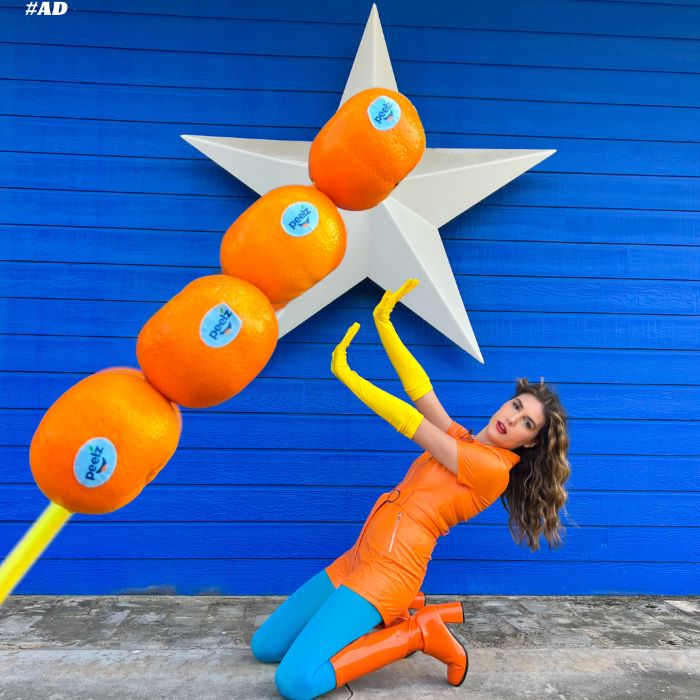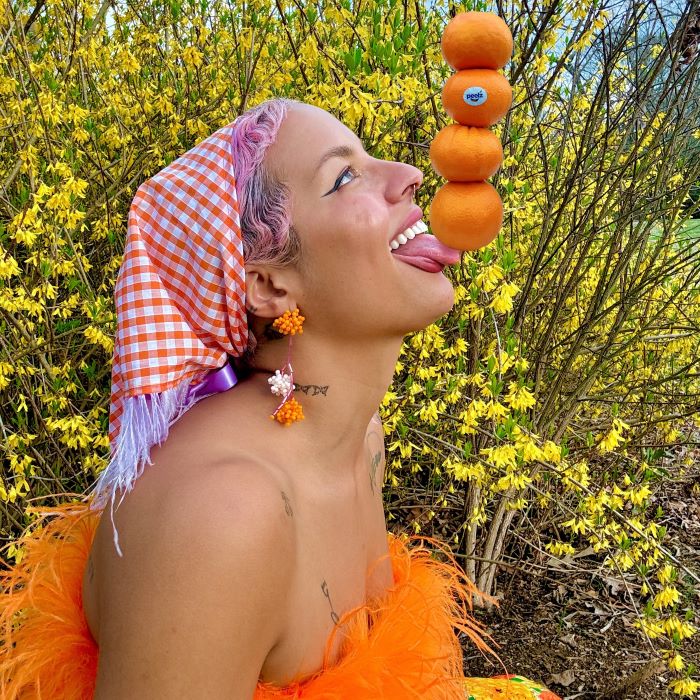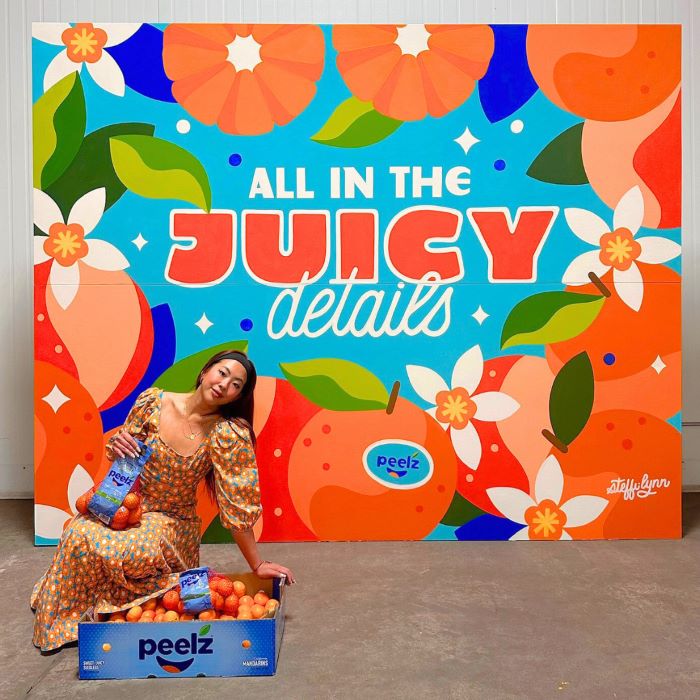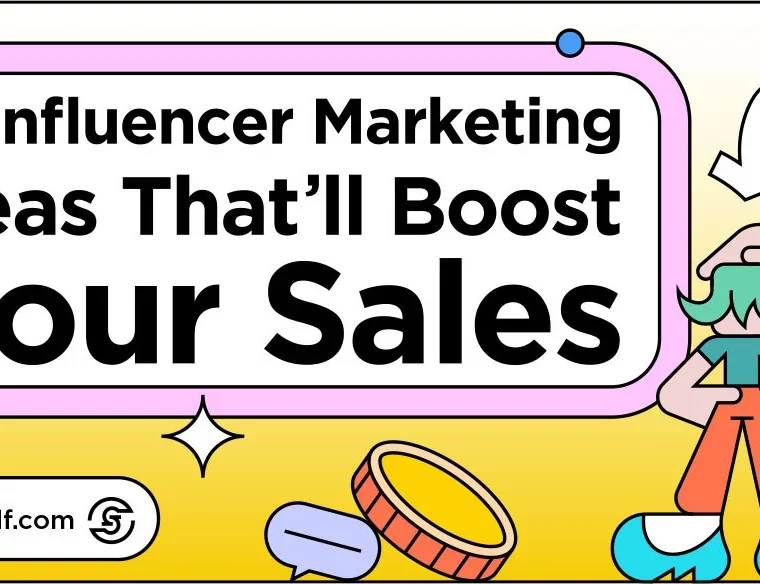The new year brings fresh opportunities for food brands to connect with their audiences in meaningful ways. But like most things, the landscape of food brand marketing has shifted significantly. One-size-fits-all campaigns and generic messaging just don’t cut it anymore. Today’s savvy consumers crave personalized content that speaks directly to their interests and behaviors.
And they want convenient shopping with the help of their fave online celebs (aka influencers). Social media platforms like TikTok and Instagram have changed how people discover new products and recipes making influencer partnerships a must. According to Meta, 78 percent of consumers say that creators are influential in helping them to discover new brands. But how does a foodie brand “cater” to their desires (pun intended)?
By using interest graph content. And trust us, we’ve seen the impact firsthand. In this post, we’re going to lean a bit into our award-winning campaign for Peelz Citrus, which tapped into audience interests and humor, turning oranges into cultural currency.
Let’s dig in.
What is Interest Graph Content?
Interest graph content is the modern evolution of demographic-based marketing. Instead of lumping consumers into broad categories based on their age, gender, or location, it’s about leveraging social media algorithms to get personal personal. This approach connects with audiences based on their interests, behaviors, and online activities. It’s about knowing exactly what makes your audience tick (in a totally non-creepy way, of course).
Here’s the data you use to build interest graph content:
- User Preferences: What people like, share, and engage with online.
- Online Behavior: The websites they visit, the content they consume, and how long they spend doing it.
- Social Connections: The creators, brands, and communities they follow and interact with.
In the food world, this means creating content that speaks directly to:
- Food enthusiasts who love oddly satisfying cooking videos.
- Health-conscious eaters looking for the next superfood trend.
- Home chefs perfecting their sourdough game (because let’s face it, that trend isn’t going anywhere).
But it also means reaching beyond traditional foodies by collaborating with creators who connect with audiences on a wide range of interests — because everyone eats. 😋 Whether it’s content tied to fashion, humor, or even offbeat trends, creators can bring your brand into unexpected conversations. By tapping into these specific passions, you can craft content that’s not only relevant and engaging but also compelling enough to make someone stop mid-scroll and think, “This is exactly what I’ve been looking for!”
Why Food Brands Should Use Interest Graph Content
Interest graph content isn’t just effective — it’s essential for food brands looking to cut through the noise and build authentic connections. Here’s why:
Engagement Rates That Get Results
An impressive 42 percent of shoppers try a new brand because of a digital offer tailored to their interests. When food brands collaborate with creators who understand their audience’s preferences, they create authentic connections that drive real engagement.
When Peelz Citrus partnered with us, we didn’t just create content; we created buzz. By leaning into bold humor and TikTok-friendly videos, we helped Peelz surpass engagement goals by 59 percent, generating over 1.7M organic and paid interactions.
The takeaway? Aligning your content with audience interests isn’t just smart; it’s essential.
Boosting Brand Awareness
When your content aligns with what your audience craves, you’re not just another brand. You become a standout — the one they can’t stop talking about (or tagging their friends in).
Catering to Niche Preferences
From gluten-free snacks to nostalgic comfort foods, interest graph content allows you to meet your audience where they are. Bring in creators who have mastered the art of engineering drool-worthy pics, recipes, and content that can earn millions of impressions, tons of interactions, and even clicks to a brand’s website. You can build a loyal fanbase with food marketing strategies that lean into the interest graph.
Creating Interest Graph Content That Resonates: A Step-by-Step Guide
Here’s how to whip up interest graph content for a food campaign that stops the scroll and drives real results:
Step 1: Find Your Community
First, figure out what your audience is craving. And no, we’re not just talking about midnight snacks (though that intel might come in handy, too). Your audience isn’t just “people who like food” — they’re communities with specific passions, quirks, and habits that you can tap into with the right tools and strategies.
Here’s how to identify your micro-audience:
- Social Listening: Use tools like Brandwatch or Sprout Social to track conversations around your brand, products, and industry. Pay attention to hashtags, trending topics, and the language your audience uses.
- Content Optimization: Dive into your analytics to uncover what’s working. Which posts get the most engagement? Which topics spark discussion? Amplify the strategies that resonate and cut what doesn’t.
- Direct Feedback: Ask your audience what they care about. Use polls, surveys, or even Instagram Story Q&A stickers to gain real-time insights.
Expand Beyond Food: Don’t just focus on recipes and dishes. Maybe your audience loves sustainable living, DIY projects, or fitness trends. These broader insights allow you to create multi-dimensional content that connects on a deeper level.
Tools to Dig Deeper: Platforms like Pinterest Trends, Reddit, TikTok (check out the Creative Center), and Google Trends are goldmines for identifying niche interests. They reveal emerging themes, trending keywords, and untapped communities that align with your brand.
Case in Point: For Peelz, we targeted Millennials and Gen Z who thrive on quirky, offbeat humor — the kind of audience that can 41.1M total impressions and 1.7M engagements.
This post from Kelli Erdmann (@elladactyl on Instagram) is one that leaves you wondering how the heck she did it. It’s part of her draw, actually – super creative, super fun, super colorful, and leans into the unexpected.
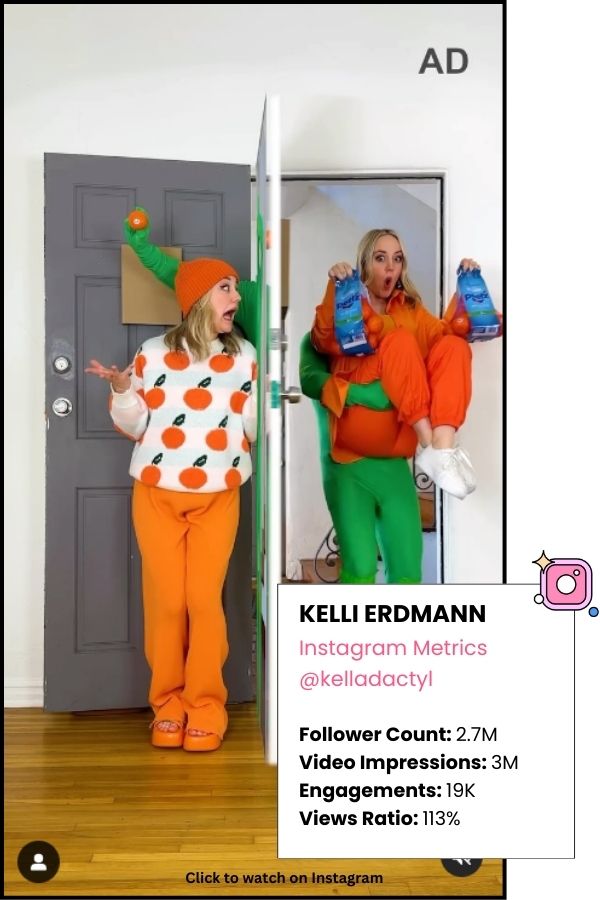
Like, what did I just watch? 🫨
Including Kelli’s style of content creation as part of the Peelz campaign resulted in millions of views. Not what you’d expect from a lunchbox fruit.
Why It Matters:
Identifying your micro-audience ensures your content hits the right notes every time. Instead of trying to appeal to everyone and ending up with generic messaging, you’re tailoring your campaigns to the people most likely to engage with — and champion — your brand. When you connect with your niche audience authentically, your brand becomes a meaningful part of their world, driving loyalty, advocacy, and real results.
Step 2: Collaborate with Creators Who Make Your Brand Shine
Creators are the connective tissue between your brand and your audience. The right influencers don’t just promote your product — they make it part of their story in a way that feels authentic and relatable.
To find the perfect creators for your campaign:
- Start with Micro-Influencers: These creators specialize in niche audiences and often have higher engagement rates than their mega-influencer counterparts. Think vegan recipe bloggers, gluten-free bakers, or TikTok chefs known for meal-prep hacks.
- Prioritize Engagement Over Follower Count: Don’t be dazzled by big numbers alone. A creator with 20K followers and a 10% engagement rate will likely deliver more meaningful results than one with 1M followers and a disengaged audience.
- Align on Values: Your creators should embody your brand’s ethos. Whether you’re focused on sustainability, indulgence, or family-friendly meals, choose influencers who align with those values to avoid flavor clashes (pun intended).
Pro Tip: Vet potential creators by reviewing their previous collaborations. Do they genuinely integrate products into their content, or do their posts feel like ads pasted into their feed?
Why It Matters: The right influencer can elevate your campaign from a microwave dinner to a Michelin-star experience, building authentic connections that drive engagement and conversions.
Step 3: Develop a Content Menu That’s “Chef’s Kiss”
It’s time to plan your menu of content — the recipes, visuals, and formats that will best showcase your product and make your audience hungry for more (literally and figuratively). This step is about creating a balance of variety and consistency to keep your audience engaged.
Here’s how to get started:
- Mix It Up: Experiment with different content types like videos, photos, stories, and reels to appeal to a range of audiences.
- Get Thematic: Highlight themes that resonate year-round, like recipe tutorials, behind-the-scenes peeks, cultural traditions, or meal-prep hacks.
- Stay Consistent: Create a content calendar to ensure your posts flow seamlessly and keep your audience coming back for seconds.
Pro Tip: Stay on top of social trends to ensure your content feels fresh and relevant. For instance, the #soupseason trend dominated Q4 feeds last year, with recipes like sausage parmesan soup sparking thousands of shares and re-creations. Incorporating seasonal moments like this into your content strategy can keep your brand top-of-mind and part of your audience’s daily conversations.
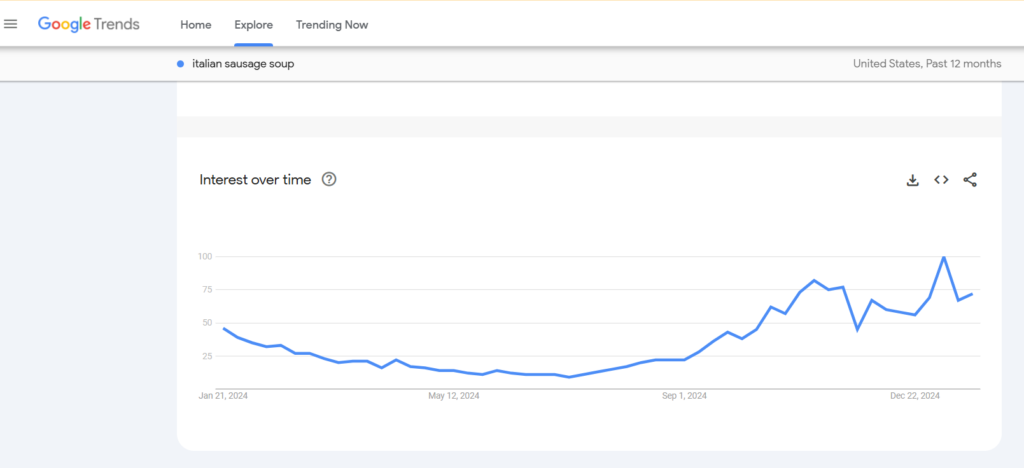
Don’t Forget the Secret Ingredient: User-generated content (UGC) adds authenticity and depth to your content strategy. Encourage your followers to share their creations featuring your product — it’s free marketing that feels personal and relatable.
Why It Matters:
The right content mix keeps your brand fresh, relevant, and memorable in a crowded feed. Seasonal trends like #soupseason not only tap into what your audience is already craving but also position your brand as part of the conversation. By pairing on-trend themes with shoppable content and UGC, you create a dynamic content strategy that sparks engagement, drives conversions, and builds lasting loyalty.
Step 4: Create Compelling Visual and Written Content
When it comes to interest graph content, there’s no one-size-fits-all approach. Your audience might stop scrolling for a cinematic slow-motion soup pour, but they could just as easily linger on a quirky meme, a carousel of vibrant food photography, or a caption that makes them laugh out loud. The magic lies in giving your creators the freedom to explore every angle that might resonate — and repurposing top-performing creative to target multiple micro-audiences.
Here’s how to bring your content to life in ways that capture interest from every angle:

- Embrace Both Video and Static Visuals: While TikTok has taught us the power of video, don’t sleep on images, carousels, and even audio formats. Some audiences respond to the motion of melted chocolate or cinematic recipe prep, while others engage with the artistry of a still shot or the cleverness of a punchy caption.
- Think Beyond Food: Interest isn’t always about the dish itself. It could be the mood of your content (warm nostalgia, cool minimalism), a color that sparks attention (hello, orange mandarin chic), or even an unexpected angle, like comedic fever-dream skits that get people talking.
- Highlight Creativity, Not Conformity: Let your creators bring their unique flavor to the table. When you allow them creative control, they’ll produce content that taps into multiple “stories” — foodies, fashionistas, comedy lovers, or fans of surreal, offbeat humor. This gives you a library of assets that can be repurposed to target diverse micro-audiences.
Pro Tip: By leaning into the interest graph, you’re not just speaking to people who like food; you’re connecting with audiences drawn to color, humor, storytelling, and style.
Why It Matters:
Interest graph content is about meeting audiences where they are and keeping them engaged by delivering the unexpected. Whether it’s a cinematic video or a bold still shot, the content doesn’t just tell a story — it tells their story.
By allowing creators the freedom to experiment and offering diverse, layered visuals, you build a campaign that resonates across multiple micro-audiences. And when your assets can be repurposed to tell a million stories in the “naked city,” your brand becomes more than just a product — it becomes part of the cultural conversation.
Step 5: Implement, Monitor, and Optimize
Launch time! Hitting “post” is just the beginning of a successful campaign. To make the most of your efforts, you need to monitor performance in real-time, adapt on the fly, and analyze results to refine your strategy for future campaigns.
Here’s how to keep the momentum going:
- Schedule and Stay Consistent: Use scheduling tools like Later or Sprout Social to ensure consistent posting that aligns with audience habits.
- Engage in Real Time: Respond to comments, DMs, and tags. Yes, even the hangry ones! Real-time engagement builds trust and makes your audience feel seen.
- Monitor Analytics During the Campaign: Track metrics like engagement, clicks, and shares to see what’s resonating.
- Repurpose Top-Performing Content: Use the Optimization Flywheel to identify your most effective creatives and repurpose them across formats or platforms to reach new micro-audiences.
Once your campaign has run its course, it’s time to refine:
- Analyze Results: Dive deep into your analytics to identify patterns and uncover what worked. Which posts drove the most engagement? Which formats sparked conversions?
- Gather Creator Feedback: Ask your influencers about their experience and any insights they gained from their audiences.
- Iterate for the Future: Use what you’ve learned to adjust your strategy, ensuring your next campaign is even stronger.
Why It Matters:
Campaign success doesn’t stop at launch — it thrives on a cycle of optimization. Monitoring and adapting in real-time lets you make smarter decisions during the campaign, while post-campaign analysis provides the insights needed for continuous improvement. By keeping an eye on your metrics and leaning into your top-performing creatives, you’re building a sustainable strategy that evolves with your audience and maximizes ROI.
Case Study Spotlight: Peelz Citrus
Our campaign for Peelz Citrus didn’t just boost engagement — it redefined what a produce brand can be. By creating bold, humorous content tailored to Millennials and Gen Z, we drove 3.4M impressions and earned Best of Category and The Visionary Award for Emerging Media at the Summit Awards.
When you align your marketing with your audience’s interests, the results speak for themselves.
Final Takeaway
Interest graph content isn’t just a buzzword — it’s how food brands stay relevant in an ever-changing market. Whether you’re launching a new product or creating a viral moment, the key is understanding what makes your audience tick and delivering content that feels personal, actionable, and unforgettable.
Need help creating campaigns that resonate? Schedule a call with our influencer marketing experts. Let’s cook up something amazing together.




